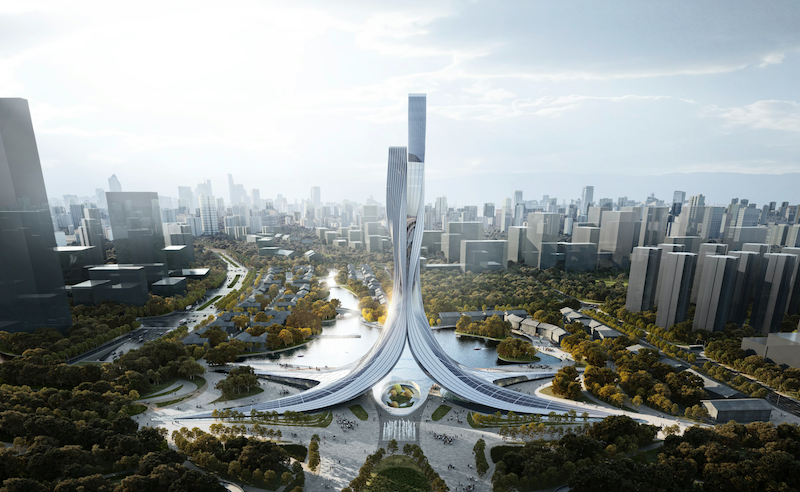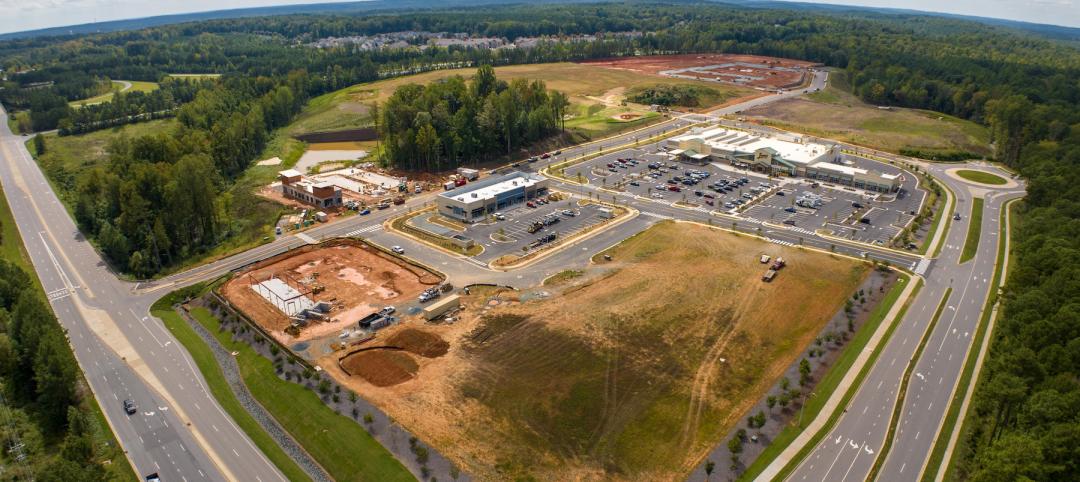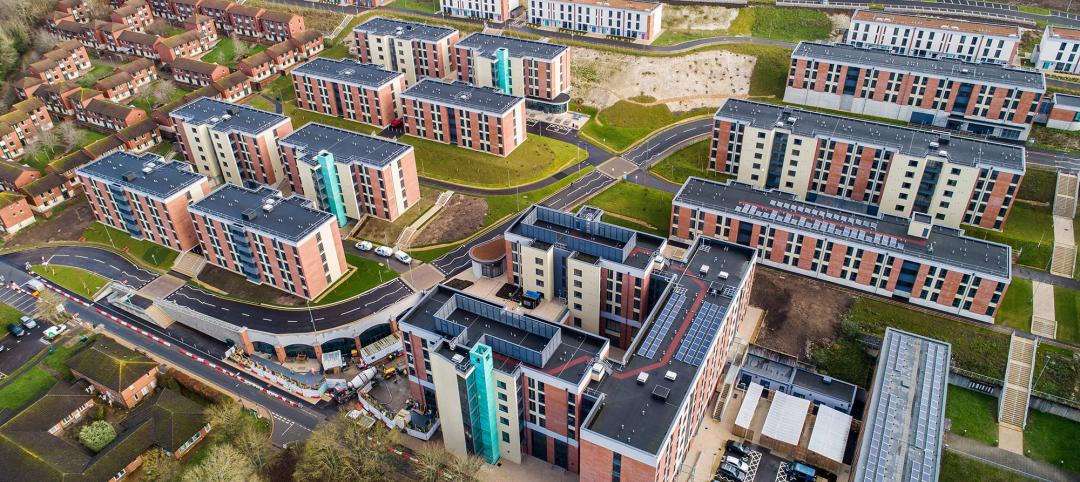After an international design competition, RMJM Shanghai was selected to design the Xiangjiang Gate in Hengyang, China. The project will be built at the confluence of the Xiang, Zheng, and Lishui rivers.
The mixed-use project will serve as a tourist information center and a monument with a panoramic viewing platform. The goal of the design was to step away from the traditional vision of a gate and move toward a more contemporary depiction.
See Also: Snøhetta’s 550 Madison Garden gains approval from NYC Planning Commission
The 580-foot-tall tower’s design is also deeply rooted in the history of the city. From above, the central, twisting towers look like a narrow stream of water passing through two pieces of land, paying tribute to the geographical location of the city and to its “convergent spirit.” When viewed upside down, the building resembles a goose flying through the sky, an homage to ancient Chinese poetry that described Hengyang as a winter refuge for wild geese, earning the city the nickname “Wild Goose City.”

Hengyang is Hunan’s second largest city and has a fast-evolving tech hub. As such, the structural system of the Gate will reflect the highest level of contemporary structural engineering technology. The design embraces the local environment and forms an interaction between technology, climate, building materials, and human behavior. The glass curtain wall will use LED technology to illuminate it at night. The facade will also be used as a “window to the Xiangjiang culture,” radiating the lights, colors, and shadows of the seasons.
Related Stories
Mixed-Use | Oct 5, 2023
Mixed-use pieces supporting a master plan in North Carolina fall into place
Near Chatham Park, a new multifamily housing community follows the opening of a shopping center.
Contractors | Sep 25, 2023
Balfour Beatty expands its operations in Tampa Bay, Fla.
Balfour Beatty is expanding its leading construction operations into the Tampa Bay area offering specialized and expert services to deliver premier projects along Florida’s Gulf Coast.
Mixed-Use | Sep 20, 2023
Tampa Bay Rays, Hines finalize deal for a stadium-anchored multiuse district in St. Petersburg, Fla.
The Tampa Bay Rays Major League Baseball team announced that it has reached an agreement with St. Petersburg and Pinellas County on a $6.5 billion, 86-acre mixed-use development that will include a new 30,000-seat ballpark and an array of office, housing, hotel, retail, and restaurant space totaling 8 million sf.
Adaptive Reuse | Sep 19, 2023
Transforming shopping malls into 21st century neighborhoods
As we reimagine the antiquated shopping mall, Marc Asnis, AICP, Associate, Perkins&Will, details four first steps to consider.
Resort Design | Sep 18, 2023
Luxury resort provides new housing community for its employees
The Wisteria community will feature a slew of exclusive amenities, including a market, pub, and fitness center, in addition to 33 new patio homes.
Adaptive Reuse | Aug 31, 2023
Small town takes over big box
GBBN associate Claire Shafer, AIA, breaks down the firm's recreational adaptive reuse project for a small Indiana town.
Giants 400 | Aug 22, 2023
Top 115 Architecture Engineering Firms for 2023
Stantec, HDR, Page, HOK, and Arcadis North America top the rankings of the nation's largest architecture engineering (AE) firms for nonresidential building and multifamily housing work, as reported in Building Design+Construction's 2023 Giants 400 Report.
Giants 400 | Aug 22, 2023
2023 Giants 400 Report: Ranking the nation's largest architecture, engineering, and construction firms
A record 552 AEC firms submitted data for BD+C's 2023 Giants 400 Report. The final report includes 137 rankings across 25 building sectors and specialty categories.
Giants 400 | Aug 22, 2023
Top 175 Architecture Firms for 2023
Gensler, HKS, Perkins&Will, Corgan, and Perkins Eastman top the rankings of the nation's largest architecture firms for nonresidential building and multifamily housing work, as reported in Building Design+Construction's 2023 Giants 400 Report.
Adaptive Reuse | Aug 17, 2023
How to design for adaptive reuse: Don’t reinvent the wheel
Gresham Smith demonstrates the opportunities of adaptive reuse, specifically reusing empty big-box retail and malls, many of which sit unused or underutilized across the country.

















